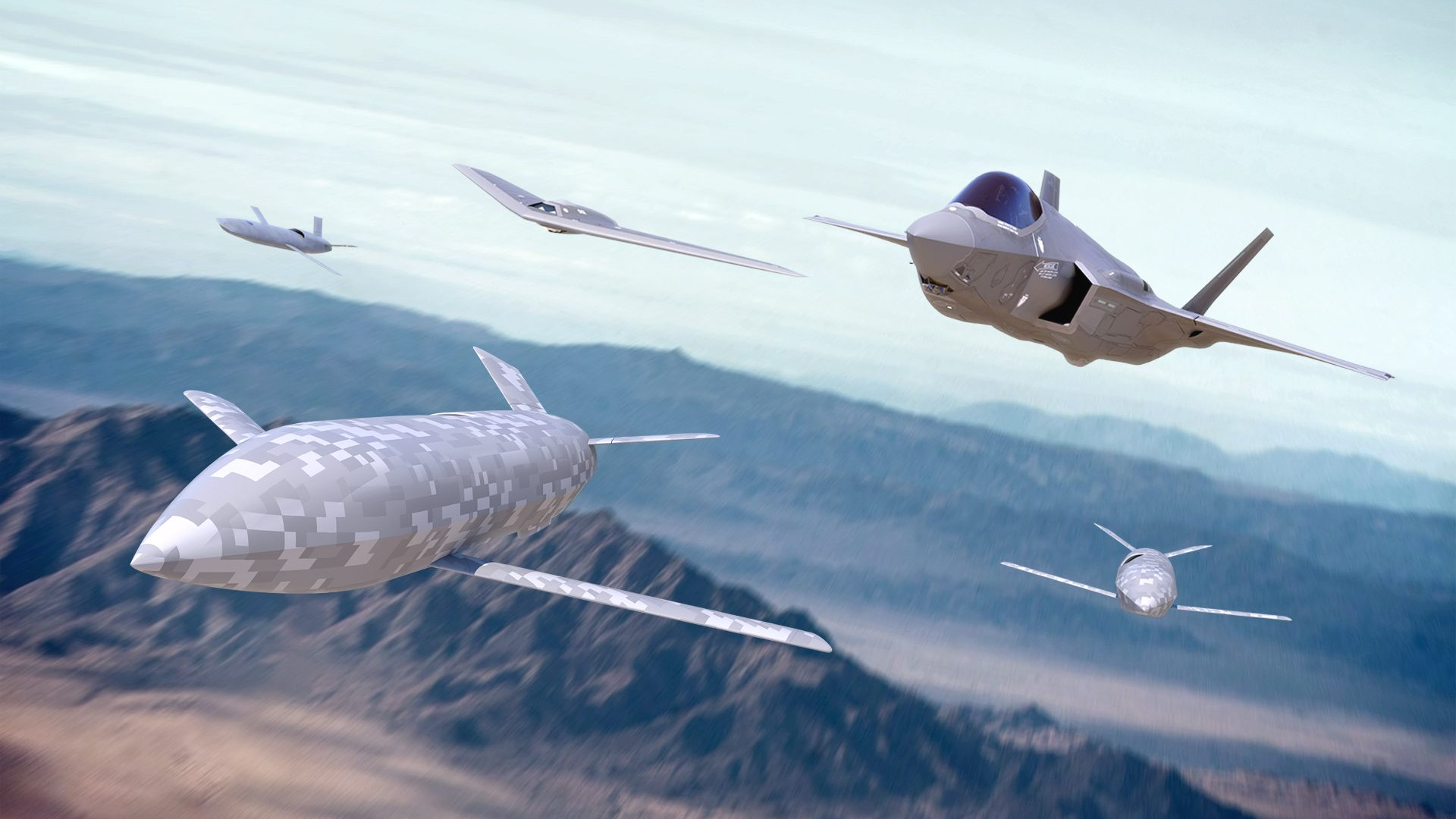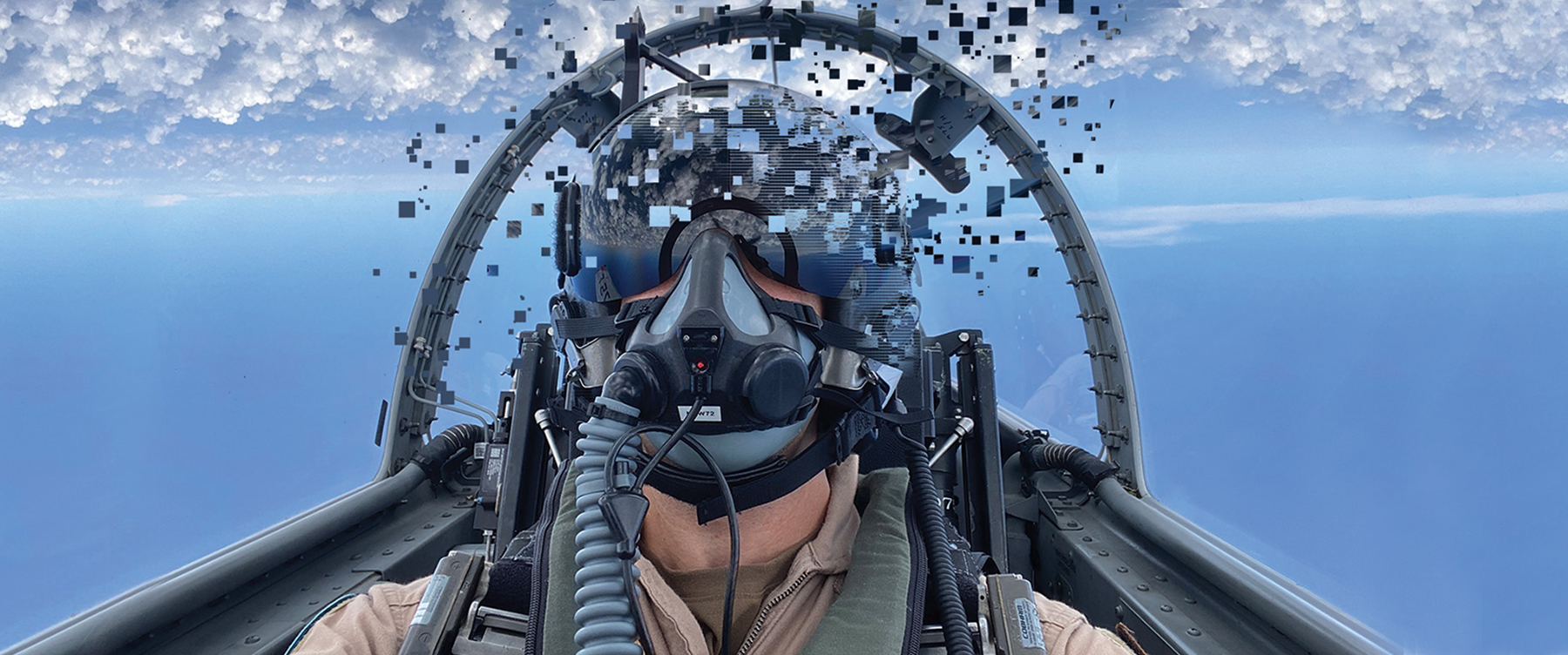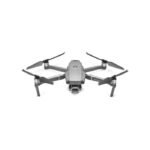Introduction
Overview of Drone Fighter Jets
As we step into an era where technology revolutionizes the battlefield, drone fighter jets are becoming a significant component of military aviation. Imagine a world where remote-controlled or autonomous aircraft can engage in combat without risking pilot lives. This is not just a fantasy; it’s a reality that is unfolding before our eyes. The emergence of drone fighter jets has led to a rethinking of traditional air combat strategies, ultimately leading to numerous advantages. Drone fighter jets, often referred to as Unmanned Aerial Vehicles (UAVs), have transcended the traditional roles of surveillance and data collection. They are now integral elements of offensive military operations, capable of executing precision strikes while maintaining a low profile in the air.
What Makes Drone Fighter Jets Unique
Unlike their manned counterparts, drone fighter jets are equipped with cutting-edge technology that allows them to operate remotely or autonomously, generating a new paradigm in military aviation. Here’s what sets them apart:
- No onboard pilot: Enables operation in hostile environments without endangering lives.
- Advanced sensors and weapons systems: Enhanced situational awareness, allowing for precise targeting.
- Reduced operational costs: Lower maintenance and training costs compared to traditional fighter jets.
- Extended flight durations: The ability to stay airborne for extended periods, covering more ground during missions.
One vivid example comes from recent conflicts where drone fighter jets have been deployed for reconnaissance and strike missions. In operations against terrorist groups, for instance, drones have been used to gather intelligence while simultaneously being positioned to respond swiftly to emerging threats.
The Technology Behind Drone Fighter Jets
So, what really powers these modern marvels? Let’s break it down:
- Artificial Intelligence (AI):
- Drones utilize AI to analyze vast amounts of data in real-time, improving decision-making processes and operational effectiveness.
- Enhanced Navigation Systems:
- With GPS and advanced terrain mapping, drone fighter jets can navigate complex environments with precision.
- Communication Technology:
- They rely on secure communication systems to transmit data and intelligence back to operators, ensuring coordinated operations.
- Stealth Features:
- Many drone fighter jets are built with stealth technology, making them harder to detect and allowing them to operate effectively in high-risk zones.
Operational Flexibility
The versatility of drone fighter jets is yet another appealing feature. They can perform various missions, such as:
- Close Air Support: Providing backup to ground troops during engagements.
- Intelligence, Surveillance, and Reconnaissance (ISR): Gathering critical information on enemy movements and locations.
- Targeted Strikes: Engaging specific targets with precision to minimize collateral damage.
The operational flexibility offered by drones means that military planners can tailor their air power to suit specific missions or objectives, enhancing overall effectiveness.
Transformation of Military Strategy
The integration of drone fighter jets into military operations signifies a broader transformation in military strategy. By enabling rapid response capabilities and maintaining situational awareness with real-time data, these drones allow for quicker, more effective decisions on the battlefield.
- Decentralized Decision-Making: Commanders can make split-second decisions based on the live feed received from drone operations.
- Force Multiplier: With a smaller number of manned aircraft needed, military forces can maintain a broader range and presence across various operational theaters.
Conclusion
In summary, the evolution of drone fighter jets is not only changing how air warfare is conducted but also redefining the concept of aerial combat itself. Their ability to operate autonomously, coupled with advanced technology, provides an edge that can significantly tilt the balance of power in favor of those who wield them effectively. It’s a fascinating time in military aviation, and as these technologies continue to develop, they present endless possibilities for future conflicts. As the landscape of warfare is transformed by drones, it prompts military leaders and policymakers to reconsider strategies and ethical frameworks surrounding their use. The future seems bright for drone fighter jets, and it’s crucial to explore these dynamics as we venture further into this new age of aerial capability. 🚀

History of Drone Technology
Evolution of Drone Fighter Jets
Transitioning from a rudimentary concept used predominantly for surveillance, the evolution of drone fighter jets has been a fascinating journey marked by rapid advancements in technology and a shifting landscape of military strategy. Picture this: way back in the early 20th century, military forces began to experiment with unmanned aircraft primarily for training purposes. Fast forward to today, and the drone landscape has transformed entirely.
Early Beginnings
The initial forays into drone technology began during World War I, with the development of rudimentary radio-controlled aircraft, like the Kettering Bug. This early “drone,” primarily a flying bomb, was more of a proof of concept than a functional tool for combat. Here’s a brief overview of key milestones in the history of drone technology:
- 1916: The first attempts at developing a drone to be used in combat began.
- 1930s: The British developed the “Queen Bee,” an early target for anti-aircraft training that paved the way for further development.
- 1940s: During World War II, the United States and Britain experimented with drones as part of their military strategies, albeit without significant successes.
Despite these early attempts, it wasn’t until the latter half of the 20th century that drone technology really began to take off (pun intended! 😊).
The Cold War Era
As the Cold War unfolded, technological advancements began to reshape the concept of aerial combat. UAVs were still largely used for reconnaissance, but the foundation for the modern drone fighter jet was being laid.
- 1960s: The development of the Ryan Firebee drone marked a significant step. This model was used extensively during the Vietnam War for surveillance missions, proving that drones could operate in hostile environments.
- 1970s: The use of drones began to expand, with military forces recognizing their potential for intelligence-gathering in dangerous zones.
During these years, military leaders strongly endorsed the idea of utilizing unmanned systems to gather intel without putting soldiers’ lives on the line. However, it was the late 1990s that marked a pivotal moment in the evolution of drone fighter jets.
The Advent of Modern Drones
The early 2000s saw an explosion in drone technology capabilities, largely driven by advancements in computer processing, materials science, and miniaturization. Here’s where it gets really exciting:
- 2001: The CIA began utilizing the Predator drone for combat operations, marking the shift from purely reconnaissance UAVs to armed drones capable of precision strikes.
- 2003: The Iraq War introduced the world to the full operational capability of drone warfare, showcasing how drones could be employed for both surveillance and direct action.
The Predator drones were not only adept at carrying out aerial surveillance but were also equipped with onboard weapon systems, cementing their role as a critical asset in military operations.
Technological Advancements
Your curiosity might lead you to wonder about the incredible technology behind drone fighter jets today. Here are some key advancements that have shaped their evolution:
- Real-time Data Processing: Modern drones can process vast amounts of data quickly, allowing operators to make informed decisions almost instantaneously.
- Advanced Targeting Systems: Precision targeting technology has enabled drones to conduct strikes with remarkable accuracy while minimizing collateral damage.
- Increased Autonomy: With artificial intelligence (AI) being integrated, drones can now perform complex tasks autonomously, reducing reliance on human operators.
You might recall the remarkable instance when a drone played a pivotal role in locating high-profile targets. These technological strides have significantly altered the military landscape, with drone capabilities becoming an indispensable asset for modern warfare.
Recent Developments
As we dive deeper into the 21st century, the pace of innovation in drone technology continues to accelerate:
- 2020s: The emergence of stealth drones, such as the RQ-170 Sentinel and the newer MQ-9 Reaper, has raised the stakes even higher. These drones can evade radar detection, making them potent tools for special operations.
- Future Directions: The potential for swarm technology, where multiple drones can operate collaboratively for a mission, offers exciting prospects for both military and civilian applications.
Conclusion
The evolution of drone fighter jets paints a picture of a technology that has grown from simple radio-controlled aircraft into complex, multi-functional systems capable of redefining modern air warfare. As we look back at the history of drone technology, it’s clear that the evolution has been marked by significant milestones, technological advancements, and a growing acceptance of unmanned aircraft in military operations. This exploration of drone fighter jets exemplifies how innovation can transform the face of warfare while prioritizing the safety of personnel. As their role continues to evolve, it will be intriguing to see what the next decade has in store, both ethically and technologically. 🤖✈️

Advantages of Drone Fighter Jets
Increased Maneuverability
Building on the fascinating evolution of drone technology, one of the most significant advantages of drone fighter jets is their enhanced maneuverability. Imagine being able to navigate complex terrains and dodge enemy fire without the constraints that come with human limitations. This is one of the most remarkable features of modern drone fighters. Drones are designed with advanced aerodynamics and lightweight materials that allow them to perform complex aerial maneuvers that manned aircraft might struggle with. Here’s why this increased maneuverability is a game-changer:
- Agile Responses: Drones can respond quickly to changing battlefield conditions, effectively adapting to new threats without the hesitation that often accompanies human piloted aircraft.
- Precision Navigation: Equipped with advanced sensors, drones can navigate through urban environments or rugged terrains, making them ideal for missions where careful positioning is critical.
Take for example the MQ-9 Reaper drone, which can fly at high altitudes and maintain a low speed without losing its operational capabilities. This flexibility allows commanders to deploy drones in various situations that require agility, whether it’s tracking a moving target or pulling off complex patterns to evade enemy air defenses.
Tactical Advantages
The increased maneuverability of drone fighter jets not only contributes to their effectiveness but also extends their battlefield applications:
- Asymmetric Warfare: In conflicts with technologically lesser opponents, highly maneuverable drones can exploit weaknesses, striking from unexpected angles.
- Multifunctionality: From reconnaissance to direct attack, drones can transition quickly between different mission profiles, adapting as the scenario unfolds.
Let’s not forget the visual impact. When potential adversaries see drones executing agile maneuvers, it can create an impression of technological superiority—a psychological edge that can often be as vital as the physical capabilities.
Enhanced Situational Awareness
Another aspect of increased maneuverability is its direct contribution to situational awareness. Drones can often reposition themselves rapidly to obtain the best lines of sight for surveillance or target acquisition, thus improving the overall understanding of the battlefield. Imagine a scenario where ground troops require immediate aerial support. A drone can swoop in, assess troop movements, and reorient itself as circumstances evolve—an invaluable asset in situations where every second counts. This ability to dynamically engage and gather data helps ensure that military planners make informed decisions, contributing to mission success.
Reduced Risk to Pilots
Another undeniable advantage of drone fighter jets is the significantly reduced risk to human pilots. In scenarios where aerial engagement is necessary, putting a pilot in harm’s way is an inherent risk of traditional air combat. Drones completely eliminate this risk by removing the human element from the cockpit.
Safety First
By employing drones for combat missions, military strategists can prioritize the safety of their personnel:
- Remote Operations: Operators are often located far from the combat zone. This separation not only keeps pilots safe but also allows them to operate under less stress and with clearer focus.
- Reduced Casualties: The potential for pilot loss is mitigated when drones handle dangerous missions, preserving valuable human resources for other tasks.
Consider the instance of operations conducted in hostile territories, where traditional combat aircraft would face significant threats. A drone can engage in these operations, performing critical missions without endangering lives.
Operational Efficiency
The reduced risk to pilots also translates into greater operational efficiency. Factors to consider include:
- Less Pressure on Human Resources: Military personnel can be reassigned to other roles, enabling a more strategic allocation of human resources across the force.
- Increased Flight Time: Drones can fly longer missions without fatigue, maintaining constant surveillance or strike capabilities over extended periods.
One real-world example that highlights this advantage is the use of drone strikes in counter-terrorism operations. Rather than sending skilled pilots into dangerous sectors, missions are conducted remotely, providing precision strikes against designated targets without exposure to risk. This strategic approach has changed how military forces engage threats and has led to more effective outcomes.
Ethical Considerations
While the reduction of risk to pilots is a clear advantage, it raises questions about the ethical and moral implications of drone warfare. As you ponder these concerns, it’s essential to recognize that while drones protect pilots, they also present complexities in warfare and conflict. The debate over how to balance technological advancements with ethical considerations is ongoing and deserves thoughtful exploration.
Conclusion
In conclusion, the advantages of drone fighter jets extend far beyond their technical capabilities. The increased maneuverability ensures tactical superiority, while the reduced risk to pilots represents a significant step forward in protecting military personnel. As drone technology continues to advance, these benefits will not only redefine modern warfare but may also shape how conflicts are approached in the future. As you explore the implications of such advancements, it’s critical to remain engaged in the conversations surrounding ethics and operational strategies. The evolution of drone fighter jets represents a remarkable intersection of technology and humanity, challenging us to think critically about the future of combat and defense. 🛩️💡

Adoption of Drone Technology in Military
Military Applications of Drone Fighter Jets
Transitioning from the advantages of drone fighter jets, it’s clear that the military’s embrace of this cutting-edge technology has profoundly reshaped operational tactics and strategies. As the global landscape evolves and threats become more complex, the military has turned to drone technology to enhance its effectiveness, efficiency, and safety. Drones have found diverse applications in military operations, going well beyond just surveillance. Let’s delve into the various military applications of these remarkable machines.
Key Military Functions
- Intelligence, Surveillance, and Reconnaissance (ISR):
- Drones are equipped with high-definition cameras, infrared sensors, and radar systems, making them invaluable assets for gathering intelligence. They can provide real-time data on enemy movements and activities, which is crucial in preparing for combat or planning ground operations.
- A personal anecdote comes to mind when I recall an instance where a military drone was used over a conflict zone to gather crucial intel on enemy positions. The information gathered led to a highly successful ground operation, demonstrating how drone surveillance can alter the course of engagements.
- Close Air Support (CAS):
- Close air support missions, where aircraft engage targets in close proximity to friendly forces, have significantly benefited from drone technology. Drones like the MQ-9 Reaper can strike while providing instant video feed, allowing ground forces to make informed decisions about their next moves.
- With their ability to loiter above the battlefield for extended periods, drones can wait for the perfect moment to engage targets, ensuring that strikes are both timely and accurate.
- Targeting and Strike Missions:
- Armed drones carry precision-guided munitions that allow military forces to conduct targeted strikes with minimal collateral damage. This capability is particularly vital in urban warfare scenarios where protecting civilian lives is a priority.
- For example, drones have been involved in operations against high-value targets in terrorist organizations, demonstrating their ability to execute strikes that are both precise and strategic. Their stealth features make them difficult to detect, enhancing their effectiveness.
Logistics and Resupply Operations
In addition to combat roles, drones are increasingly being utilized for logistical purposes:
- Supply Drops:
- Drones can deliver supplies to troops in remote or hostile areas where traditional supply routes may be compromised. This capability enhances the sustainment of military operations by ensuring that personnel have access to necessary resources.
- Imagine a situation where ground troops are cut off from their supply chain. A quick drone delivery of ammunition, medical supplies, or food can be a game-changer in keeping them operational.
Search and Rescue Operations
Drones also play a crucial role in search and rescue missions:
- Cross-Departmental Collaboration:
- Military drones equipped with thermal imaging can quickly scour vast areas for missing personnel or downed aircraft. Their ability to survey large terrains efficiently can save lives.
- A compelling example is during natural disasters where military drones are deployed for search and rescue. They can assess damage and enable rescue teams to locate survivors swiftly, showcasing the broad utility of drone technology beyond combat.
Training and Simulations
- Pilot Training:
- Drones are increasingly integrated into training programs for pilots and military personnel. They allow for realistic simulations, enabling soldiers to practice tactical maneuvers without putting them in harm’s way.
- Utilizing drone technology in training helps familiarize military personnel with the capabilities and limitations of UAVs, making them more competent when these tools are needed in real-life situations.
Cyber Warfare and Electronic Warfare
Drones are now playing a pivotal role in cyber and electronic warfare:
- Disruption Operations:
- Equipped with electronic warfare systems, drones can jam enemy communications or disrupt radar systems. This capability allows for creative tactics during military operations, providing a strategic edge over adversaries.
- Surveillance of Cyber Infrastructure:
- Drones can also monitor critical infrastructure to identify potential threats or vulnerabilities, adding another layer of protection to military operations.
Conclusion
In conclusion, the military applications of drone fighter jets are vast and varied, encompassing roles that range from intelligence gathering to combat engagement. The adoption of this technology represents a pivotal shift in how military forces operate, enhancing their effectiveness while minimizing risks to personnel. By utilizing drones for an array of tasks—from delivering supplies to executing targeted strikes—the military can adapt to the increasingly complex and dynamic nature of modern warfare. As we move forward, it will be intriguing to witness how further advancements in drone technology continue to transform military operations, offering new strategies and capabilities that may redefine future conflicts. This comprehensive understanding of drone applications not only highlights their importance on the battlefield but also underscores the need for ongoing discussion about the ethical considerations associated with their use. As technology evolves, so too must our framework for engaging with it responsibly. 🛡️✈️

Challenges and Concerns
Ethics and Morality
Transitioning from the myriad applications of drone technology in the military, it’s crucial to delve into some of the pressing challenges and concerns that accompany these advancements. One of the most significant arenas of debate revolves around the ethics and morality of drone warfare. As we embrace these technologies, we must critically evaluate the unintended consequences and moral implications they bring to the forefront of military strategy.
The Global Perspective
Drone warfare presents unique ethical dilemmas that are unlike traditional combat scenarios. With the capability to conduct strikes from thousands of miles away, the detachment between the operator and the on-ground reality raises vital questions. Here’s what’s at stake:
- Dehumanization of Warfare:
- The ability to conduct war remotely can lead to a disconnection from the human costs involved. Operators may find it easier to launch strikes without witnessing the direct ramifications.
- Collateral Damage:
- Despite the precision of modern armed drones, civilian casualties can still occur. The decision-making process associated with targeting can become complicated, raising concerns about accountability and moral responsibility.
- For instance, there have been cases where drone strikes intended for specific targets resulted in collateral damage, impacting innocent lives. Such incidents stir public outrage and call for a reevaluation of operational protocols.
- Despite the precision of modern armed drones, civilian casualties can still occur. The decision-making process associated with targeting can become complicated, raising concerns about accountability and moral responsibility.
Accountability and Transparency
The question of accountability emerges prominently in drone warfare discussions:
- Lack of Transparency:
- The clandestine nature of drone operations often obscures details about the decision-making processes and the consequences that arise from them. This opaqueness can lead to a distrust in military strategies and governmental oversight.
- Legal Implications:
- There are ongoing debates about the legality of targeted strikes, particularly when conducted in countries with which the military is not officially at war. The boundaries of international law and sovereignty come into question, complicating the ethical landscape.
To put it in personal terms, imagine the moral weight on those who operate drones from far away, knowing that their decisions could affect countless lives. The moral quandaries extend to societies that grapple with the consequences of military actions fueled by remote operations.
Balancing Ethics with Innovation
As society embraces technological innovation, remaining vigilant about ethical considerations is essential. Here are steps that can help align military drone operations with ethical practices:
- Stakeholder Engagement: Involving ethicists, international law experts, and civil society organizations in discussions about drone operations can foster a more balanced approach.
- Clear Guidelines: Establishing robust guidelines for drone usage can minimize ethical pitfalls, ensuring that all operations are conducted within a strong moral and legal framework.
Cybersecurity Risks
As we navigate the ethical landscape surrounding drone technology, it’s equally important to address cybersecurity risks that accompany their use. With increasing reliance on connected devices, drones are not immune to the threats posed by cyberattacks.
Vulnerabilities in Drone Operations
With the embedding of advanced technology, drones are susceptible to a host of cyber threats that can compromise not only the effectiveness of the vehicles but also the safety of personnel involved. Here are some notable points to consider:
- Hacking Risks:
- Drones often utilize GPS and communication systems that can be vulnerable to hacking, leading to unauthorized control or data manipulation.
- Data Interception:
- Critical information Channeled through drones can become targets for cyber-attacks. If adversaries gain access to sensitive data, it can thwart military strategies and expose vulnerabilities.
Real-World Implications
The potential for cybersecurity breaches raises serious concerns about operational integrity. A vivid example includes reports of rival forces using jamming technology to disrupt drone communications. These interference tactics could jeopardize missions and endanger lives while jeopardizing the effectiveness of military operations.
Preventive Measures
To counteract these cybersecurity threats, military organizations must remain proactive:
- Robust Security Protocols:
- Implementing comprehensive security measures, such as encryption and secure communication channels, can significantly mitigate risks.
- Regular Updates:
- Continuous evaluation and updates to drone software and hardware can protect against emerging threats. Military forces need to stay ahead in maintaining the integrity of their operational technology.
- Training and Awareness:
- Ensuring that personnel are adequately trained in cybersecurity protocols is crucial. This preparedness fosters a culture of vigilance in safeguarding sensitive operations.
Conclusion
In summary, while drone technology offers remarkable advantages and applications in military operations, it also presents significant challenges, particularly in the realms of ethics and cybersecurity. Navigating these challenges thoughtfully requires a delicate balance between innovation and responsibility. As we continue to integrate drones into modern warfare, engaging in conversations about these ethical concerns and taking proactive steps to combat cybersecurity risks will be essential. Only through careful consideration and planning can we harness the full potential of drone technology while maintaining accountability and safety for all involved. 🛡️🔐

Future of Drone Fighter Jets
Technological Advancements
As we look toward the future of drone fighter jets, it’s essential to consider the wave of technological advancements that promise to reshape not only aircraft capabilities but also the landscape of military operations. The rapid evolution of technology in drone warfare brings exciting opportunities and complex challenges that we must navigate.
Emerging Technologies
Here are a few key advancements on the horizon that are set to redefine drone capabilities:
- Artificial Intelligence (AI):
- The incorporation of AI technology allows drones to analyze vast amounts of data in real time, improving their decision-making processes.
- Imagine an AI-powered drone that can autonomously identify and engage targets, reducing the time required for human intervention. This ability could increase the efficiency of operations while improving situational awareness.
- Swarm Technology:
- One of the most fascinating developments is swarm technology, where multiple drones can operate collaboratively to complete missions. These swarms can perform complex tasks, adjust tactics based on real-time feedback, and create a formidable presence on the battlefield.
- Picture a scenario where a fleet of small drones could overwhelm air defenses together, creating openings for larger, more powerful aircraft to strike critical targets. The potential for swarm strategies can substantially enhance military operations.
- Stealth Enhancements:
- Future drones will likely feature improved stealth technology that reduces their visibility to radar and other detection systems. By minimizing their profiles, these aircraft can occupy airspace with reduced risk.
- Stealth improvements could also include advance materials and shapes that manipulate radar signatures. With the right technology, drones could infiltrate deeper into enemy territory without detection, allowing for unprecedented operational effectiveness.
Advanced Communication Systems
- Secure Networks:
- The need for robust communication networks has never been more critical. Future drones may utilize quantum communication technology, enhancing data security and making interception more challenging for adversaries.
- Real-time Data Sharing:
- Advanced drones will likely support seamless data sharing, allowing them to communicate with one another and ground forces instantaneously. This connectivity can vastly improve coordination across missions, resulting in mission success.
Practical Considerations
These advancements pose several operational possibilities, but it’s important to maintain an understanding of their implications:
- Cost and Resources:
- While technology is progressing rapidly, affordability remains a concern. Developing advanced drones with cutting-edge tech may require significant investments, posing challenges for military budgets.
- Training Requirements:
- Personnel will need ongoing training to ensure effective use of advanced drones. Adapting to innovative technologies will demand investment in human resources as well.
As we set our sights on these exciting technological advancements, it becomes increasingly clear that the battlefield of the future will leverage drone technology in groundbreaking ways.
Impact on Modern Warfare
The integration of advanced drone technology is poised to have a profound impact on modern warfare, redefining strategies and altering how conflicts are approached.
Strategic Implications
- Asymmetrical Warfare:
- Drones can level the playing field between technologically superior forces and less advanced adversaries. Nations with limited military resources can use drones effectively to counter threats, fundamentally changing the dynamics of warfare.
- Shift in Force Structure:
- Militaries are reevaluating their composition in favor of integrating drone units into their arsenal. This shift necessitates new doctrines on combat engagement and resource allocation, as drone capabilities continue to expand.
Human Factors
Despite the technological advancements, the human element remains a crucial aspect of warfare:
- Operator Experience:
- As drones become more autonomous, operators must still make critical decisions based on ethical considerations and situational awareness. The balance of decision-making between AI and human intervention will remain an important topic of discussion for military planners.
- Psychological Effects:
- The use of drones can alter the psychological experience of combat for both operators and targets. The detachment associated with remote warfare may create new challenges tied to the mental health of personnel involved.
International Relations and Policy
The rise of drone technology in warfare is also likely to affect international relations and policy development:
- Regulatory Frameworks:
- As nations expand drone programs, the need for international regulations governing drone warfare becomes more pressing. Establishing boundaries on the use of drone technology will be key to preventing misuse and maintaining accountability.
- Diplomacy:
- The use of armed drones may become a focal point in diplomatic relations. Countries with advanced drone technology may exert influence over other nations, leading to new alliances and power dynamics on the global stage.
Conclusion
In conclusion, the future of drone fighter jets is laden with technological advancements that have the potential to revolutionize modern warfare profoundly. As these technologies evolve, they promise to enhance military operations, introduce new strategies, and instigate fundamental changes in international relations. However, with these opportunities come challenges that require careful consideration. Navigating the ethical implications, psychological effects, and necessary policy adaptations will be critical in ensuring that the integration of drones aligns with our collective values and security interests. Embracing the possibilities while remaining vigilant about potential risks will ensure that drone technology serves as a powerful tool for enhancing, rather than undermining, global security and stability. 🚀🌍



